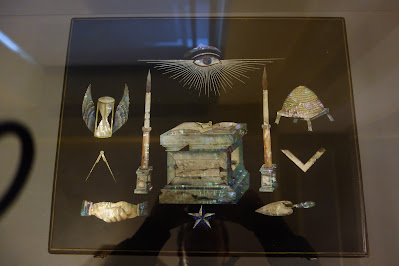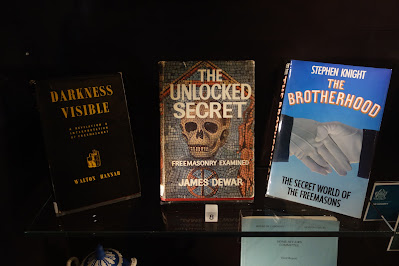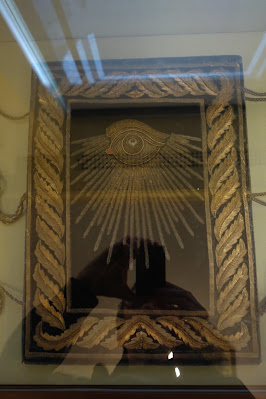The Freemason's Hall on Great Queen Street is the headquarters of the United Grand Lodge of England and Supreme Grand Chapter of Royal Masons of England. Built in the 1920s and early 1930s in art deco style, the building houses a museum with an extensive display of everyday objects, ceremonial objects and regalia with intriguing Masonic decoration and symbols.
The symbols include the all-seeing eye, the letter G, the square and pair of compasses, the two-headed eagle, the Masonic blazing star, the beehive, the moon, the number 7, the two pillars, and the sheaf of corn.
The museum's intent, in part, is to dispel popular myths about Freemasonry. It is not a religion nor does it favor one religion over another. Its roots lie in the traditions of the medieval stonemasons who built Europe's great cathedrals and castles. While the museum states that Freemasonry is not a secretive society, I find it, nevertheless, weirdly enigmatic, especially in the modern world.
Click Here to Learn More
 |
| The Grand Master's Throne (1791) |
 |
Portrait of King George IV in background
George IV wears the robes of the Order of the Royal Garter |
 |
| This is one of more than 20 lodge rooms in the Freemason Hall. |
 |
| Symbols on an apron may represent rank and responsibility |
 |
The Barraclough Clock from the 1800s
with Masonic Symbols |
 |
Portrait of Grand Master John James Howard Coe 1819
A sideboard with mysterious symbols |
 |
Decorative Mason Box
To hold the jewels and aprons of a Freemason |
 |
| Clock with Freemason Symbols |
 |
Glassware from the 1800s
with Masonic symbols |
 |
| Josephine Baker was a Freemason in France |
 |
| Freemason Hall in London |




























No comments:
Post a Comment